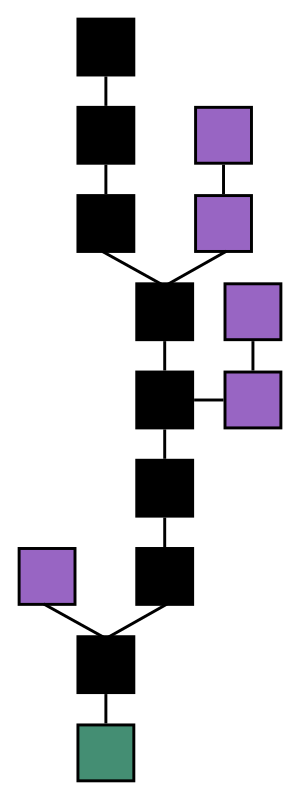The block chain is a constantly growing list of records that are connected and secured by cryptography.

Image
In the case of blockchain formation, the main leak or chain (black) consists of the largest sequence of blocks from the primary block (green) to the last block and the single class block (pink) is located outside the main chain.
Structurally, it is a database of information about the duration and nature of work and an anti-conversion strategy. It is an open segmented database that can record work performed in a verifiable and reliable process. Which is associated with a process for new block verification
Once recorded, the information in a block can be changed without changing all the sub-sequential blocks, and attempting such a change can lead to major disruptions to the network.
Secured by a blockchain design that is comparable to a computer process with high Byzantine fault tolerance, resulting in a blockchain-centric unification.These jobs include identity management, performance processing, historical site documentation, food security and selection.
In 2008, blockchain inventor Satshi Nakamoto invented the cryptocurrency Bitcoin for secure use of the general transaction database. Blockchain discovery for Bitcoin made it the first digital currency to solve the dual cost problem without the help of any trusted organization or central server.The design of Bitcoin has inspired its use in other practical applications.
🔥Structure
- A blockchain is a decentralized, fragmented, and general digital database used to record the transactions of many computers so that record changes are not possible without changing the block and resulting in network disruption [permanently invalid connection]. Gives the opportunity to audit much cheaper.A blockchain database management uses an autonomous pair-to-pair network and segmented scheduling system.
🔥History
Stout Heber and W. first describe transactions performed by secure block chains via cryptography. Scott Stornita in 1991. In 1992, Bayer, Heber, and Stornita systematically designed the Merkel branch, increasing its efficiency to accommodate multiple documents in one block. In 2002, Daniel Sasha and David Majiris invented a network file system that provides decentralized security.
Authors trust other authors but not the network. They use unique signatures for file transactions. This signature chain captures the core of the file system (which is basically the Merkel branch). A key chain can be identified in this process where all included clients can write. And the user who can solve a cryptographic puzzle can see the block.In 2005, Nick Jabo introduced a blockchain-like approach to decentralized headings, which was decentralized. Was not safe from attack
The first blockchain was launched in 2008 by an individual or a group of individuals known as Satshi Nakamoto. In the same year, Nakamoto became a very important partner of Bitcoin where it serves as a general database for all transactions on the network.So the use of blockchain and bitcoin created the first digital money that tackled the dual cost problem without any trusted organization and served as an inspiration for the creation of other similar cryptocurrencies.
In August 2014, the Bitcoin blockchain limit reached 20 GB (GB) for all transactions on the network. In January 2015, this limit increased to about 30 GB. Again, from January 2015 to January 18, the Bitcoin blockchain increased from 50 to 100 GB. Although block and chain are separate words in the original document of Satshi Nakamto, it happened to be known as single word blockchain by 2016.